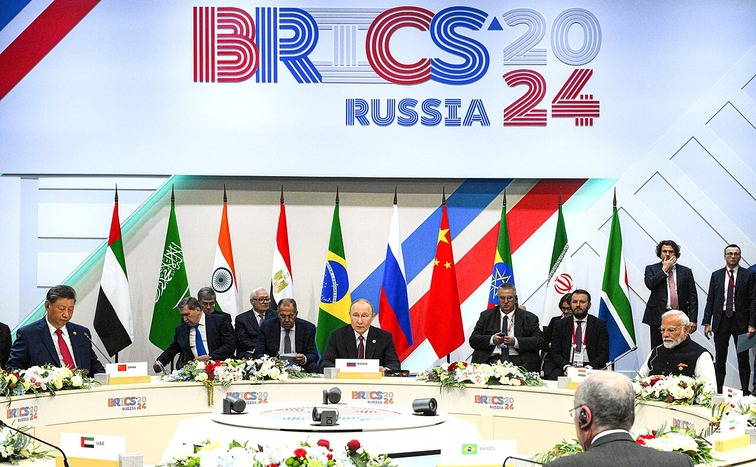Newer members are building 25 GW of coal, oil, and gas, while wind and utility-scale solar expansion is 2.3 GW
BRICS — the inter-country association — has made progress in terms of energy security. In 2024, fossil-powered capacity dropped below half of the total mix in the BRICS group for the first time, according to a new report by Global Energy Monitor.
While founding BRICS members Brazil, India, and China continue to lead the global clean energy transition, the fossil fuel build-out among newer members is higher. They are building over ten times as much coal, oil, and gas capacity (25 GW) as wind and utility-scale solar (2.3 GW), found the report.
Titled ‘BRICS can lead clean energy transition in new members, where fossil fuels predominate’, the report’s aim is to inform how the bloc can play a crucial role in the power sector buildout by backing clean-energy power projects, ahead of the bloc’s summit in July 2025.
According to the report, China is spearheading renewables, by building over half the solar capacity (947 MW) and nearly 90% of wind capacity (601 MW).
Most RE projects are in early stages
GEM’s report found that over 97% of wind and utility-scale solar capacity among new BRICS members is in the early stages of project development, compared to 30% of fossil projects. While hydropower and geothermal projects have higher construction rates, they still fall short of the buildout for coal, oil, and gas.
The bloc has more than twice as much wind and utility-scale solar in the works as compared to fossil fuels, found the report.
The expansion of the BRIC group, however, leads to around 94% of global construction and pre-construction coal plant capacity being part of the bloc, according to GEM’s data.
China’s dominating role
Interestingly, while China is pursuing large-scale renewable expansion domestically, overseas, Chinese finance and construction still back 7.7 GW of new coal, mostly in Indonesia, according to the report.
Also, Chinese state-owned enterprises have backed over 60% of the total power capacity under construction in new BRICS member geographies and over 90% of hydropower under construction.
“Stalwart BRICS members have an opportunity to show leadership and model their experience with the clean energy transition with the new members. Instead, there’s a real risk of sending these countries down the wrong path by investing in coal, oil, and gas,” said report author James Norman, summing up the report.
About The Author
You may also like
Renewables are Cutting Down Power Prices Globally: Report
India’s PLI Drives Growth in Solar Manufacturing Sector: Report
Global coal demand growth rate slows down as China shifts to renewable energy: Report
India says it won’t rely on global climate or pollution rankings to shape policies
Why India’s Clean Cooking Revolution Must Be Electric

